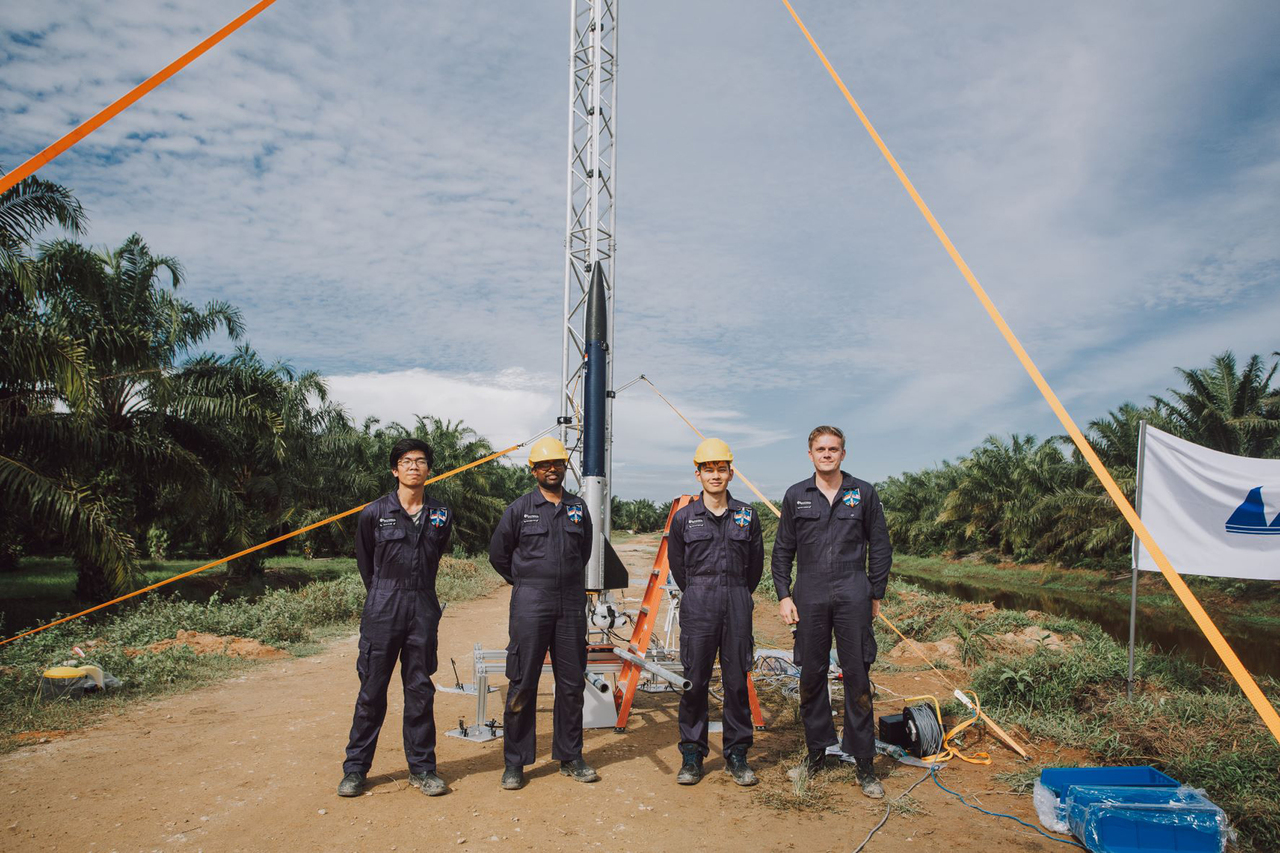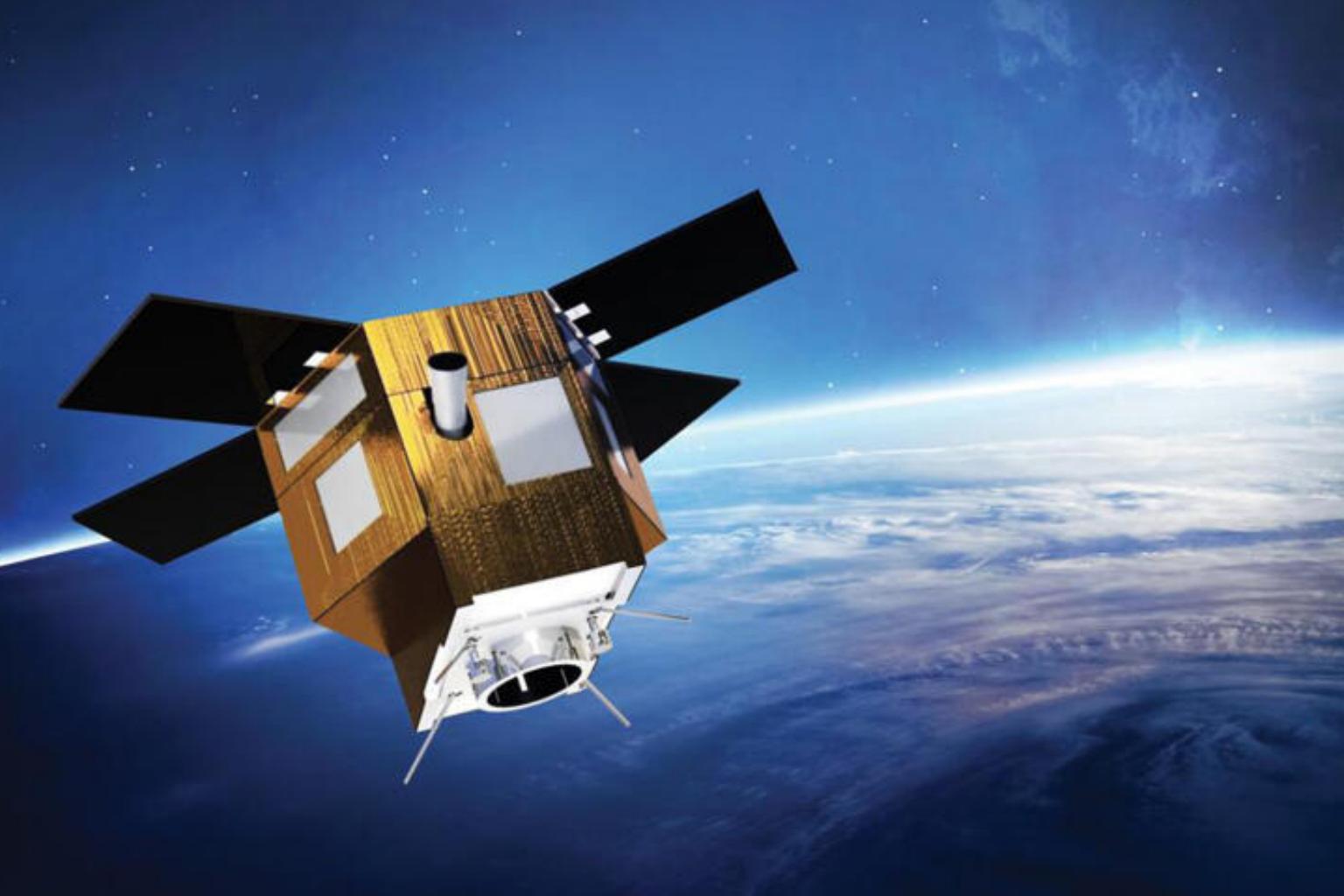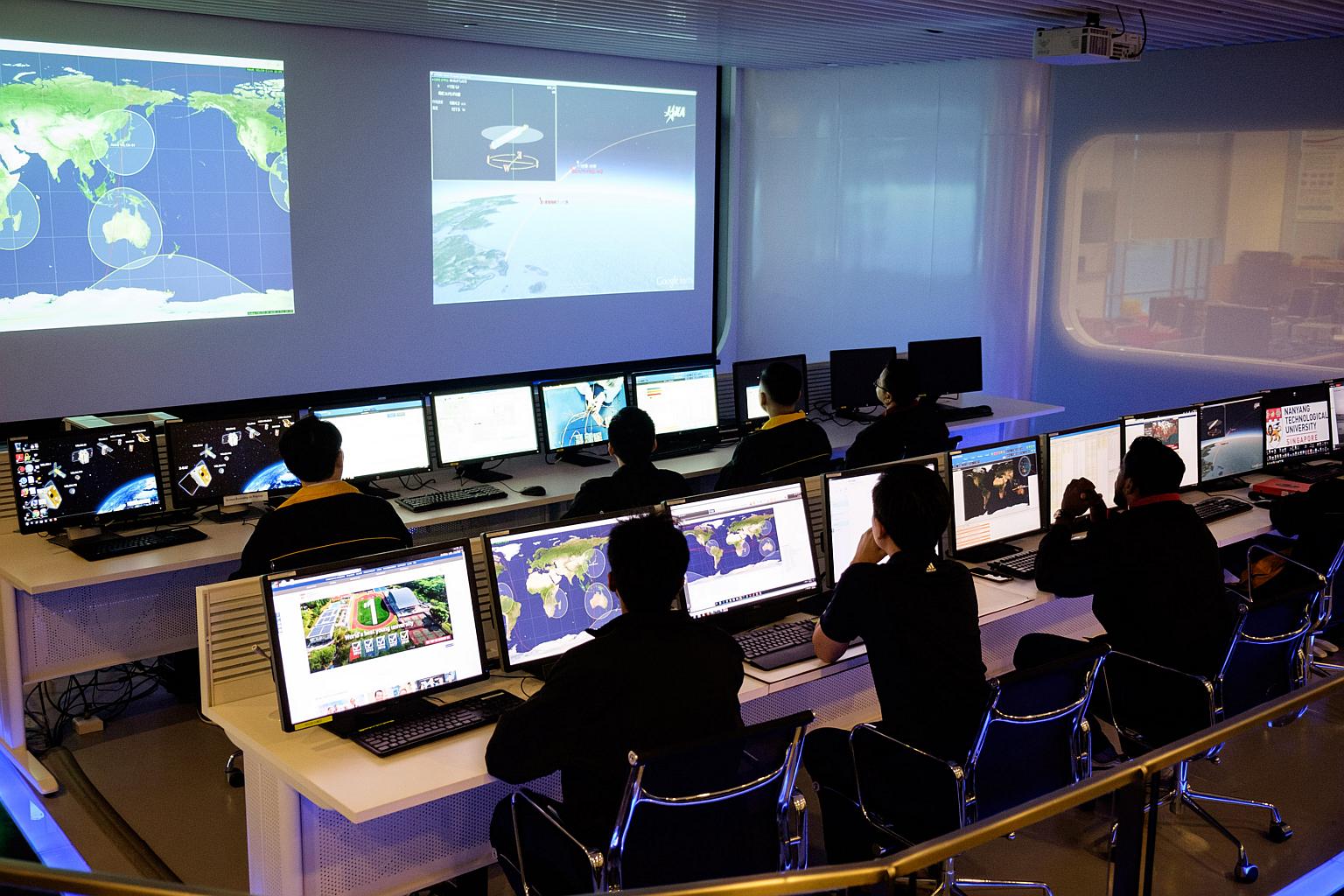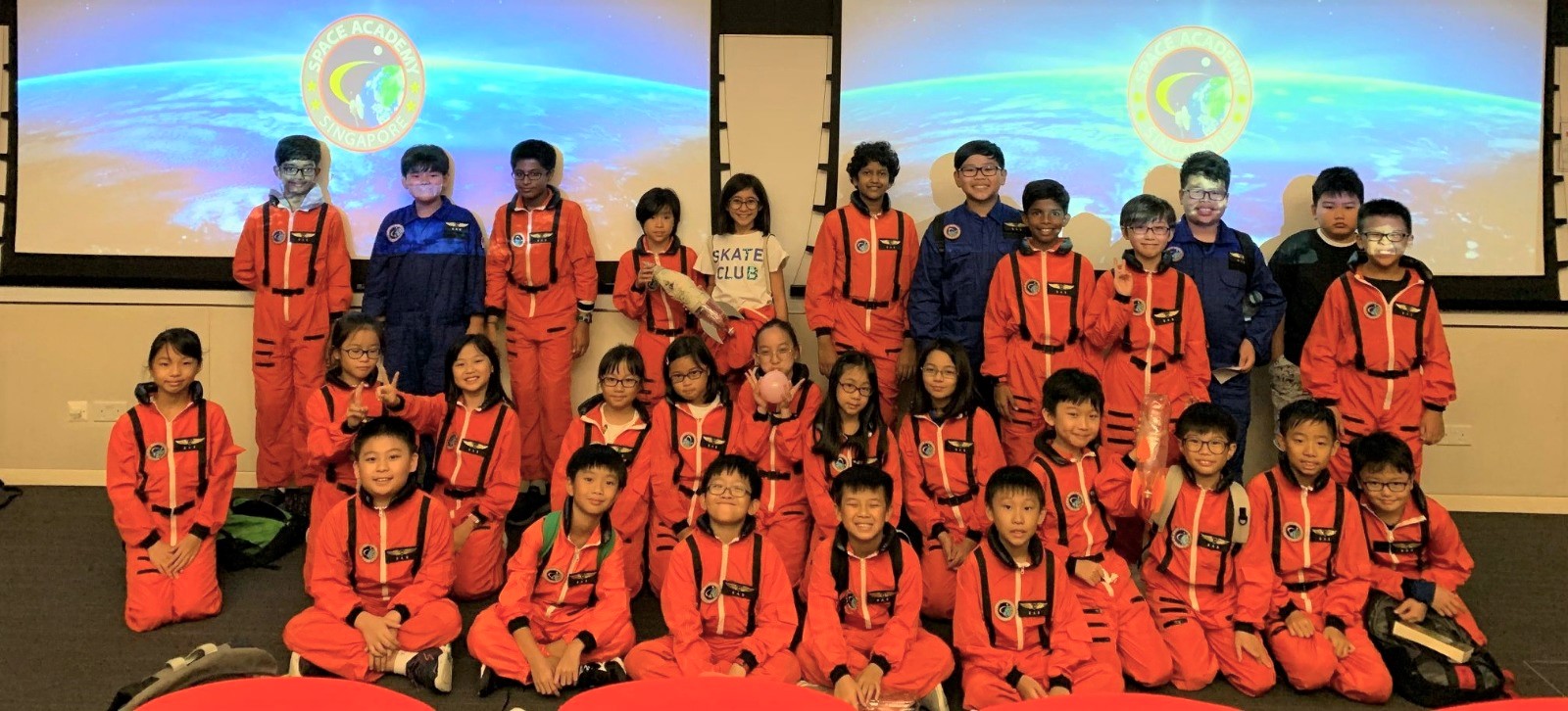Primer
Singapore's space sector is on a mission for funds and talent
This is the eighth of 12 primers on current affairs issues under the news outreach programme by The Straits Times and the Ministry of Education.
Sign up now: Get ST's newsletters delivered to your inbox

Equatorial Space chief executive officer Simon Gwozdz (far right) and his colleagues launched their technology demonstrator rocket over Perak, Malaysia.
PHOTO: EQUATORIAL SPACE
Follow topic:
Mr Shanmugam Surya's fascination for the cosmos started in polytechnic, when he watched a documentary about the space race between the United States and the Soviet Union.
He was inspired by German-American rocket engineer Wernher von Braun, who led the National Aeronautics and Space Administration (Nasa) in its mission to land on the moon.
"I adopted von Braun's calling as my own, and committed to it," says Mr Surya, 24, who is now reading electrical engineering at the National University of Singapore (NUS).
He went on to become a two-time champion at space challenges here, where he and his team designed a spacecraft and proposed a way to clear space junk, such as dead satellites.
After graduating, he is looking to tap his electrical engineering know-how to build processors and chips for satellites, rovers and probes.
Singapore's niche in microelectronics, aerospace, aviation and deep tech provides a good launchpad for its expansion into space - the final frontier. The leap makes sense as revenue from the global space industry is expected to be worth US$1 trillion (S$1.4 trillion) by 2040.
The local budding space scene comprises more than 50 space companies with over 1,800 employees. And over the past five years, more than 10 space and satellite-related start-ups have sprouted here.
Singapore did not enter the space scene to compete with the larger space-faring nations. Instead, its focus is mainly on building components for satellites, telecommunications and analysing data captured by satellites.
Its national space office, the Office for Space Technology and Industry (OSTIn), focuses on harnessing technologies, including satellite communications and remote sensing, to serve national needs in areas such as aviation, maritime, sustainability and climate action, says its executive director David Tan.
To support those needs and create disruptive technologies, the Government announced this year a $150 million investment in research and development of space capabilities.
To Ms Lynette Tan, chief executive of Singapore Space and Technology Limited (SSTL), Asia-Pacific's leading space organisation, the space industry is an engine - one that will take Singapore's tech hub status "to a different stratosphere".
Game-changing satellites

TeLEOS-1 is Singapore's first commercial earth observation satellite. It was built by ST Engineering and launched in 2015.
PHOTO: ST ENGINEERING
Since 2011, Singapore has sent up 16 satellites, the majority built by universities for research and demonstration of new technology.
The nation's first commercial satellite, called TeLEOS-1 and built by ST Engineering, was launched in 2015. The 400kg machine captures images of places near and at the equator.
Singapore wants to become a leader in a relatively new area, of flying satellites very close to earth. At very low earth orbit of up to 450km above the earth, as compared with the usual height of between 500km and 2,000km, satellites can capture images and data at a higher resolution. Telecommunication also improves, as a closer satellite will reduce network delays.
But those machines run the risk of veering off or being pulled back to earth from atmospheric drag. To solve this, local company Aliena develops low-powered engines that will maintain the satellites' low orbit by producing stronger propulsion.
In 2025, Singapore will launch a refrigerator-sized satellite at a 250km orbit, to test new technologies, including Aliena's engine and a locally designed space camera.
"(Singapore is) a technology front runner in being able to explore this domain of space rapidly... and we can position ourselves as solution providers globally," says Dr Mark Lim, Aliena's co-founder.
Singapore also leverages space technology to keep a watch on security and disasters in the region. Nanyang Technological University's (NTU) Earth Observatory of Singapore adds value to satellite data and images by creating damage proxy maps of disaster-hit regions, to help with relief operations.
Emerging satellite tech can also be used to study and combat climate change, by measuring changes to sea-surface temperature and ice melt, or the amount of carbon dioxide in the atmosphere.

Another domain Singapore can venture into is space life sciences, which looks into how humans, animals and even microorganisms from earth respond to the harsh and hostile environments of space.
It is an important research area as human space missions are looking more probable by the day.
Then there is also growing food on space, which could build on Singapore's advances in novel foods.
Funding challenge
Since 2007, Singapore space organisation SSTL has been laying the groundwork for the local space industry by bringing in multinationals that have space divisions, and creating opportunities for start-ups.
It also runs an accelerator programme that provides local and international start-ups with access to experts and fund-raising support.
What works in Singapore's favour is its neutrality, which matters for commercial space activities that require international collaboration.
That was a finding in a 2020 report by the Singapore chapter of the Students for the Exploration and Development of Space (Seds Singapore), a non-profit run by university students.
But funding remains a major challenge, since the space business is highly capital-intensive, and deep tech needs longer incubation and development before results are seen.
"The investment and venture capital community is not very familiar with space tech. They find it a little mystical almost," says Mr Simon Gwozdz, chief executive of Equatorial Space, which develops rockets to send satellites and other space vehicles into orbit.
For broadband satellite operator Kacific Broadband Satellites Group, more than 70 per cent of its capital comes from foreign investment, says its chief executive and founder Christian Patouraux.
Since 2020, Kacific Broadband Satellites Group has been providing low-cost Internet access to rural areas across South-east Asia and the Pacific - through its 6,800kg communication satellite.
The start-ups also hinted that having a national space agency, beyond a space office, would be helpful for companies that need help securing funding, navigating regulations and getting licences.
Mr Patouraux adds that while Kacific Broadband Satellites Group is based in Singapore, its first satellite sent up in 2019 had to be registered with Japan.
He says start-ups could propose projects to a local space agency and respond to grant calls, which can bolster the firms' stature.
Mr Gwozdz says a space agency can provide funding to help deep tech companies meet key milestones and pique invester's interests. "Trying to compete with our rivals in countries where they do have access to those kinds of frameworks is very difficult if we don't have a comparable system in place," he adds.
But others disagree, as they find the local space ecosystem cohesive.
Another challenge is the lack of local talent. Some companies hire a mix of Singaporeans and permanent residents, and employees from abroad.
Various space-tech players are on a mission to build the local talent pool, even as they spread the word to children and parents that there is an accessible space industry here.
Earlier this year, SSTL launched its Space Faculty arm to curate relevant courses and programmes - including space camps - for the young, as well as those considering a mid-career switch.

OSTIn and SSTL have also regularly organised space challenges and competitions for teenagers and young people. OSTIn's SpaceLab Programme allows students to design experiments under microgravity conditions that will be sent up to the International Space Station.
Seds Singapore - which has three chapters at NUS, NTU and the Singapore University of Technology and Design - has drawn in more than 130 members since its founding in 2019.
The students are working on nine projects, with one group building a rover and another assembling a rocket.
The non-profit's president, Mr Yeoh Jun Kai, said the majority of the students - both local and international - are from the aerospace, mechanical and electrical engineering faculties.
"Many of the members were interested in space since young, from watching movies, TV shows and documentaries. Many of them also quoted SpaceX as a source of inspiration," says Mr Yeoh.
With the industry taking shape, space ambitions should no longer remain a pipe dream for those with an interest.
To join the space-tech sector, scoring straight As is not as crucial as having an innovative mind.
Employers prioritise experience and technical skills, says Mr Yeoh, and those could come from internships, competitions and extra-curricular activities such as the Seds Singapore projects.
Next year, the non-profit's rocketry team will be the first from Singapore to launch their rocket 3,000m into the sky in New Mexico, as part of the world's largest collegiate rocketry contest.
Mr Surya's advice to space and deep tech aspirants is to start early, read up on the field, and take part in programmes and workshops."Be passionate and clear about your goals and skill development path," he says, "and be reasonably competent during your undergraduate years."
About The Straits Times-Ministry of Education News Outreach Programme
For 12 Mondays between March 21 and Aug 8, this paper’s journalists will address burning questions and offer Singaporean perspectives on complex issues in the Opinion section.
The primer articles are part of The Straits Times-Ministry of Education News Outreach Programme, which aims to promote an understanding of local and global issues among pre-university students.
The primers will broach contemporary topics, such as competition and collaboration in healthcare, and economic growth in South-east Asia.
Other issues in the series include reimagining ageing in Singapore and the relationship between food and culture.
Each primer topic will give a local perspective to help students draw links to the issues’ implications for Singaporeans.
This programme is jointly organised by The Straits Times and the Ministry of Education. This series takes a break over the school holiday and will resume on July 18.

